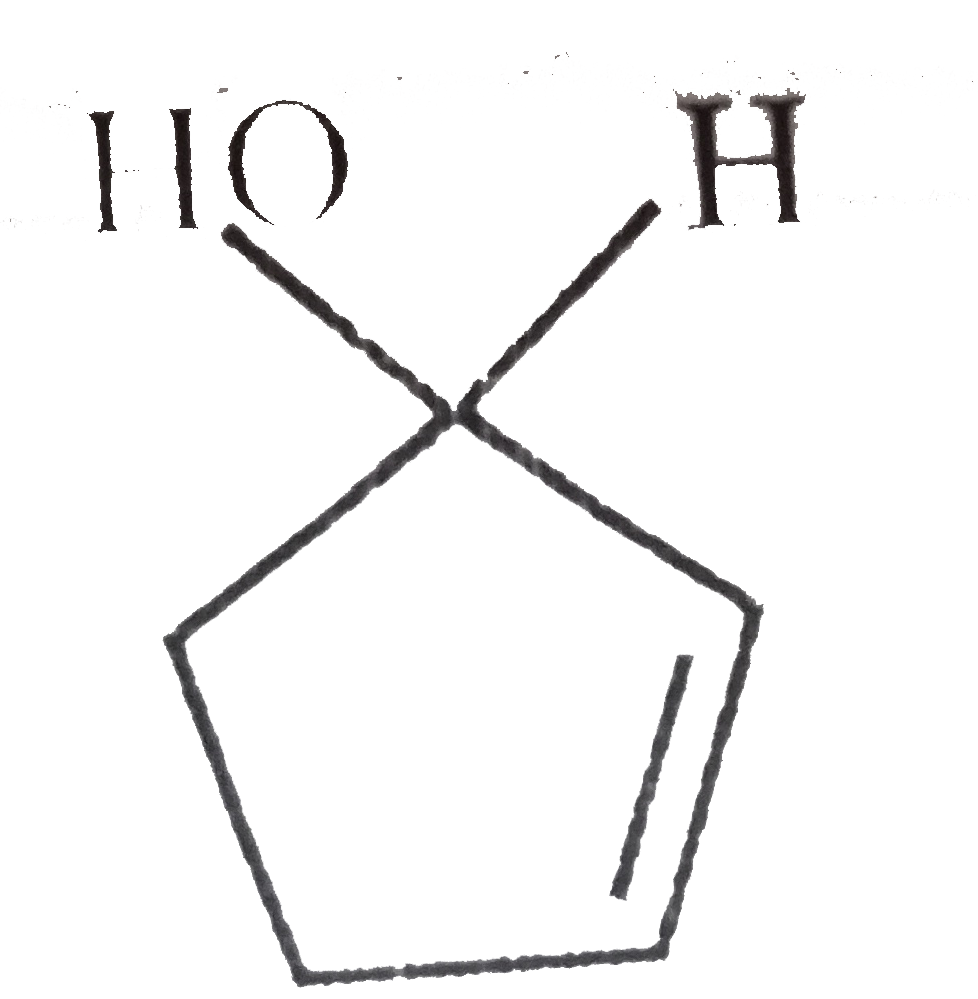The hydrolysis of optically active 2-bromobutane with aqueous NaOH result in the formation of :
A
(-)-butan-2-ol
B
(±)-butan-2-ol
C
(+)-butan-2-ol
D
(±)-butan-1-ol
Video Solution
Text Solution
The correct Answer is:B
CH3−C∣BrH−CH2−CH32-Bromobutaneaq.NaOH−−−−−→CH3−C∣OHH−CH2CH3(±)−Butan-2-ol
2-Bromobutane is a 2∘ alkyl halide which can undergo nucleophilic substitution by SN1 or SN2 mechanism. This will lead to the production of both tha enantiomers (±).
|
Topper's Solved these Questions
- HALOALKANES AND HALOARENESBOOK - MODERN PUBLICATIONCHAPTER - HALOALKANES AND HALOARENESEXERCISE - C. MULTIPLE CHOICE QUESTIONS (with more than one correct answers)
10 Videos
- HALOALKANES AND HALOARENESBOOK - MODERN PUBLICATIONCHAPTER - HALOALKANES AND HALOARENESEXERCISE - D. MULTIPLE CHOICE QUESTIONS (based on the given passage / comprehension)
9 Videos
- HALOALKANES AND HALOARENESBOOK - MODERN PUBLICATIONCHAPTER - HALOALKANES AND HALOARENESEXERCISE - A. MULTIPLE CHOICE QUESTIONS (with only one correct answer)
35 Videos
- GENERAL PRINCIPLES AND PROCESSES OF ISOLATION OF ELEMENTSBOOK - MODERN PUBLICATIONCHAPTER - GENERAL PRINCIPLES AND PROCESSES OF ISOLATION OF ELEMENTSEXERCISE - COMPETION FILE (Integer Type Numerical Value Type Questions)
5 Videos
- ORGANIC COMPOUNDS CONTAINING NITROGEN BOOK - MODERN PUBLICATIONCHAPTER - ORGANIC COMPOUNDS CONTAINING NITROGEN EXERCISE - UNIT PRACTICE TEST
5 Videos
Similar Questions
Knowledge Check
The hydrolysis of optically active 2-bromobutane with aqueous NaOH results in the formation of:
A(-)butane-2-olB(±)butane-2-olC(+)butane-2-olD(±)butane-1-olWhich is optically active :-
A B
B C
C D
D
An optically active compound
A(a) Rotates the plane polarised lightB(b) Changing the direction of polarised lightC(c) Do not allow plane polarised light to pass throughD(d) None of the above
